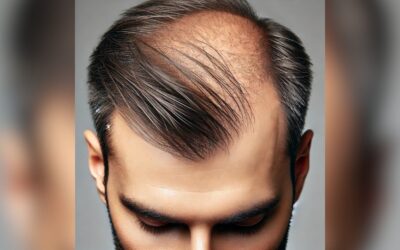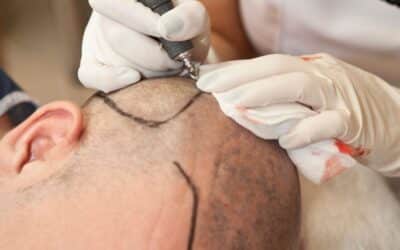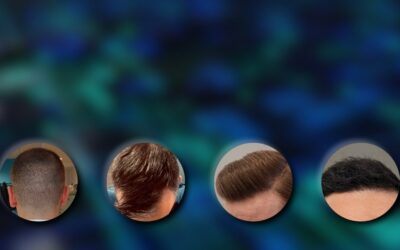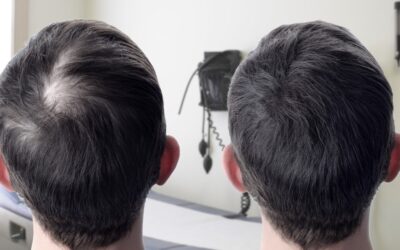When it comes to hair transplants, there are various techniques available such as FUE (Follicular Unit Extraction) and FUT (Follicular Unit Transplant). Each procedure has its own advantages and limitations, making it important for individuals to be informed before making a decision.
In this article, we have discussed the differences between FUE and FUT procedures, as well as their potential benefits for different types of patients.
If you suffer from male pattern baldness or other forms of hair loss, consulting with a knowledgeable hair transplant surgeon is crucial in determining whether FUE procedures are the best choice for your individual needs. So, “Are FUE Procedures Right for Me?” Let’s find out!
What Is A FUE Hair Transplant?
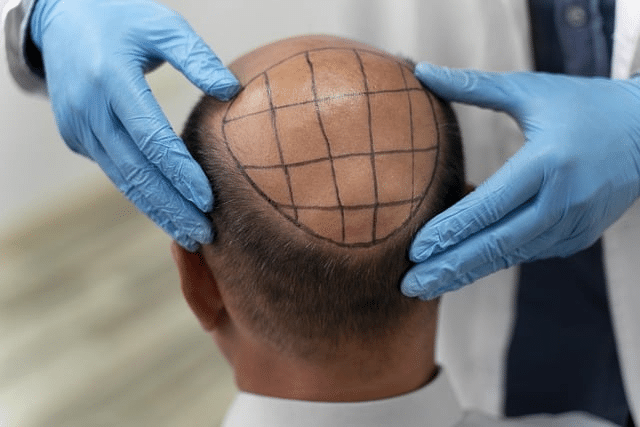
FUE or Follicular Unit Extraction is one of the most advanced hair transplant techniques available today. Follicular Unit Extraction FUE hair restoration involves extracting individual hair follicles from the donor area. Harvesting hair follicles is typically done at the back of the head. Then, implanting the number of grafts needed into the balding or thinning areas on the hair-bearing scalp donor areas.
This process is done using a specialized micro punch tool, resulting in small circular scars in the donor site that are virtually undetectable. Deciding on getting a FUE hair transplant depends on many factors.
Here are some potential benefits of FUE procedures that may make them the right choice for you and many patients we see here at Best Hair Transplant in Los Angeles:
1. Minimally Invasive:
One of the major advantages of FUE procedures is that they are minimally invasive compared to other hair transplant techniques. This means that there is less scarring, less pain and discomfort, and a shorter recovery time. This makes it an attractive option for individuals who lead busy lives and cannot afford significant downtime after the procedure.
2. No Linear Scarring:
Unlike FUT procedures, which involve extracting a strip of skin from the donor area and leaving a linear scar, FUE procedures leave minimal scarring. As mentioned before, these scars are virtually undetectable, making it a great option for those who prefer to wear their hair short.
3. Suitable For A Variety Of Hair Types:
The FUE procedure is suitable for a variety of hair types, including curly or coarse hair. This is because individual follicles can be extracted without disrupting the natural curl pattern of the hair.
4. More Natural Looking Results:
Since individual hairs are transplanted, FUE procedures result in more natural-looking results compared to other techniques. This is because the surgeon has more control over the placement and direction of surrounding hair follicles.
Candidates for FUE Transplant
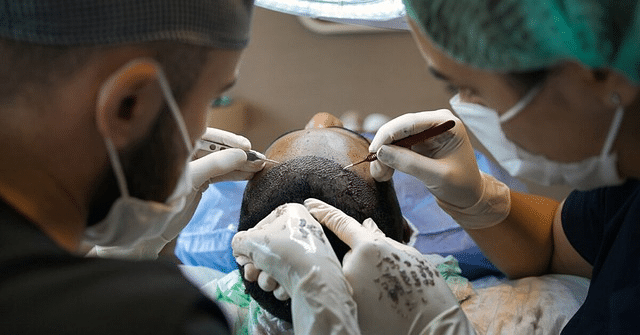
While FUE procedures have many potential benefits, they may not be the best choice for everyone. Here are some factors to consider when determining if this procedure is right for you:
Hair Loss Level:
FUE procedures work best for individuals with early stages of hair loss or thinning hair. This is because there needs to be enough donor hair in the back of the head to transplant into the balding areas.
Donor Hair Availability:
As mentioned before, FUE procedures require individual follicles to be extracted from the donor area. For those with limited donor hair, this may not be a suitable option as it can lead to overharvesting and a less natural-looking result.
Time Commitment:
FUE procedures can take longer than other techniques, as individual follicles need to be extracted and implanted. This can make it a less attractive option for individuals who are looking for quick results.
Budget:
FUE procedures can be more expensive compared to other hair transplant techniques due to the specialized equipment and training required. It is important to consider your budget when deciding if this procedure is right for you.
Average Cost Of The FUE Transplant Procedure
The cost of FUE (Follicular Unit Extraction) hair transplant procedure can vary depending on several factors, including the skill and experience of the surgeon, the location of the clinic, and the number of grafts required. On average, FUE hair restoration surgery can cost anywhere from $4 to $15 per graft, with most sessions requiring 800 to 2,000 grafts.
This translates to an average total cost ranging from $4,000 to $30,000. It is important to note that some clinics may offer discounted rates or package deals for larger sessions or multiple procedures. Consulting with a qualified hair transplant surgeon is key in determining the exact cost for your individual needs.
How Successful Is A FUE Hair Transplant?

FUE hair transplant procedures have a high success rate and can provide long-lasting results when performed by an experienced surgeon. The transplanted hairs will typically shed within the first few weeks, but new hair growth should start to appear within a few months.
Over time, this transplanted hair from the Follicular Unit Extraction will continue to grow and blend in with your existing hair, creating a fuller and more natural-looking head of hair. This form of hair restoration surgery is the best option for a vast majority of patients
What Is the Difference Between FUE and DHI?
DHI (Direct Hair Implantation) is a variation of the FUE technique that involves using a specialized tool to directly implant the extracted hair follicles into the scalp without creating any incisions. This results in less handling of the grafts, which can improve their survival rate and provide even more natural-looking results.
However, DHI procedures may be more time-consuming and require more specialized training for surgeons, resulting in higher costs for patients. For most patients, the Follicular Unit Extraction is a perfectly acceptable hair transplant surgery for those with balding and thinning hair.

Which is Better for me FUE or FUT?
The best hair transplant technique for you depends on several factors such as your degree of hair loss, desired outcome, budget, and personal preference. While FUE procedures may be suitable for individuals with limited hair loss or those who prefer shorter hairstyles, FUT procedures may be a better option for patients with more extensive hair loss or requiring larger sessions.
FUT and FUE combined- Does it work?
In some cases, a combination of both FUT and FUE procedures may be recommended by surgeons to achieve the best outcome for patients. This is known as a “hybrid” hair transplant and involves using both techniques in one session.
For example, FUT may be used to harvest a large number of grafts quickly and efficiently, while FUE can be used to fill in any gaps or refine the hairline for a more natural look.
Is FUE Suitable For Both Men And Women?
Yes, FUE hair transplants can be suitable for both men and women experiencing hair loss. However, the causes of hair loss may differ between genders and require different approaches in determining the best course of treatment. Consulting with an experienced hair transplant surgery is important to determine if FUE procedures are suitable for your specific needs.
Does Hair Transplantation Have Side Effects?
As with any surgical procedure, there are potential risks and side effects associated with FUE hair transplantation. These can include mild discomfort, redness, swelling, and scarring at the donor and recipient sites. With FUE, there are not many side effects. With Follicular Unit Transplantation, on the other hand, expect a linear scar which may or may not be visible depending on your doctor and hair style.
However, these side effects are typically temporary and subside within a few days to weeks after the procedure. It is important to follow post-operative care instructions provided by your surgeon to minimize any potential side effects.
A PERMANENT HAIR LOSS SOLUTION

While there are several temporary solutions for hair loss, such as wigs or hairpieces, FUE hair transplants offer a more permanent solution.
The transplanted hairs are taken from areas that are not affected by male/female pattern baldness, making them resistant to future hair loss. This means that the results from FUE procedures can last a lifetime, allowing individuals to regain their confidence and enjoy a fuller head of hair.
So, if you’re looking for a long-term solution to your hair loss woes, FUE hair transplants may be the answer you’ve been looking for. Consult with us; we have experienced surgeons, and find out if FUE procedures are right for you.

FAQs
How do you know if hair transplant is right for you?
Hair transplants are not suitable for everyone. It is important to consult with a qualified hair transplant surgeon who can evaluate your individual needs and determine if you are a good candidate for the procedure.
Who is not a good candidate for hair transplant?
Individuals with certain medical conditions, such as uncontrolled diabetes or autoimmune diseases, may not be suitable candidates for hair transplants. It is important to disclose any medical history and current health conditions to your surgeon during the consultation process.
What are the disadvantages of FUE technique?
As with any surgical procedure, there are potential risks and side effects associated with FUE hair transplants. These can include mild discomfort, redness, swelling, and scarring at the donor and recipient sites.



